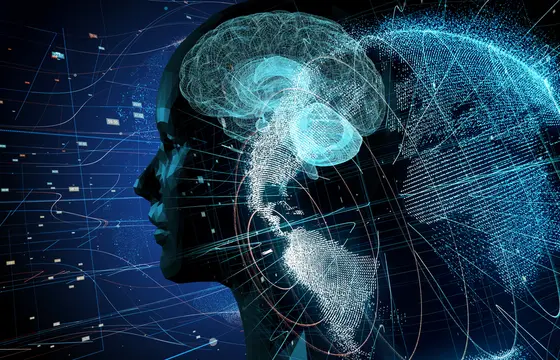One of the most complex accomplishments of our brain is spatial orientation. Our inner GPS helps us find our car that we have parked three roads down or find the way to our office without getting lost. To accomplish this, the brain uses various cell types including place cells and grid cells. Place cells tell the brain the current position. Scientists have already been able to confirm this in experiments. Grid cells collaborate with the place cells. But their exact function has been a matter of theoretical speculation so far.
“It has been proposed for a long time that grid cells are responsible for measuring distances and for path integration,“ says Hannah Monyer, neuroscientist at the German Cancer Research Center (Deutsches Krebsforschungszentrum, DKFZ) and at the University Hospital Heidelberg. “Now we have finally provided experimental proof of this.“
Path integration is a term referring to the ability to construct a virtual map of one's environment using velocity and direction of movement. In other words: If one has traveled a path from A via B to C, path integration also helps find the direct path from A to C.
A research group led by Mariana Gil from Monyers' team conducted an experiment where mice had to prove their navigation skills in a swimming test. The test was performed in two phases. First, the mice swam to a platform through a straight or L-shaped corridor. In the second round, the corridor was removed and the mice had to find the platform again relying solely on their spatial orientation skills. To prevent the animals from using visual or auditory signals for navigation, the room was darkened and confounding noise was played. “Mice are good swimmers, but they will not stay in water longer than necessary and therefore try to reach the saving platform as quickly as possible,“ explains Monyer.
Mice with intact grid cells solved this task straight away without problems. Mice with defective grid cells had difficulties. The more grid cells were impaired and disrupted in their activity, the more the route deviated from the optimum path. “Our experiment proves that grid cells in fact accomplish path integration,“ said Monyer.
The animals' performance remained constant throughout the test runs. This shows that the animals do not learn orientation; it is an innate behavior.
In order to rule out that the mice with intact grid cells simply were particularly smart, the same test was subsequently performed in a modified arrangement. This time, the room was lightened and the platform was marked with a little flag. Now all the mice, including those with impaired grid cells, showed similarly good results.
The mice in this experiment only had to cover short distances of about one meter. “Migratory birds flying from Germany to Africa probably use other mechanisms for navigation,“ Monyer admits. “But we think that in humans, grid cells are also responsible for enabling us to find the most direct way from A to C!“ Next, Hannah Monyer and her colleagues want to investigate the role of grid cells in spatial learning and memory.
Grid cells are found in the entorhinal cortex; place cells are located within the hippocampus. The two brain regions are closely linked with each other. Cells that resemble place cells and grid cells have also been found in the human brain in these regions. In 2014, the discovery of these cells in rodents was honored with the Nobel Prize for Medicine.
Mariana Gil, Mihai Ancau, Magdalene I. Schlesiger, Angela Neitz, Kevin Allen, Rodrigo J. De Marco, and Hannah Monyer: Impaired path integration in mice with disrupted grid cell firing
Nature Neuroscience 2017, DOI 10.1038/s41593-017-0039-3



